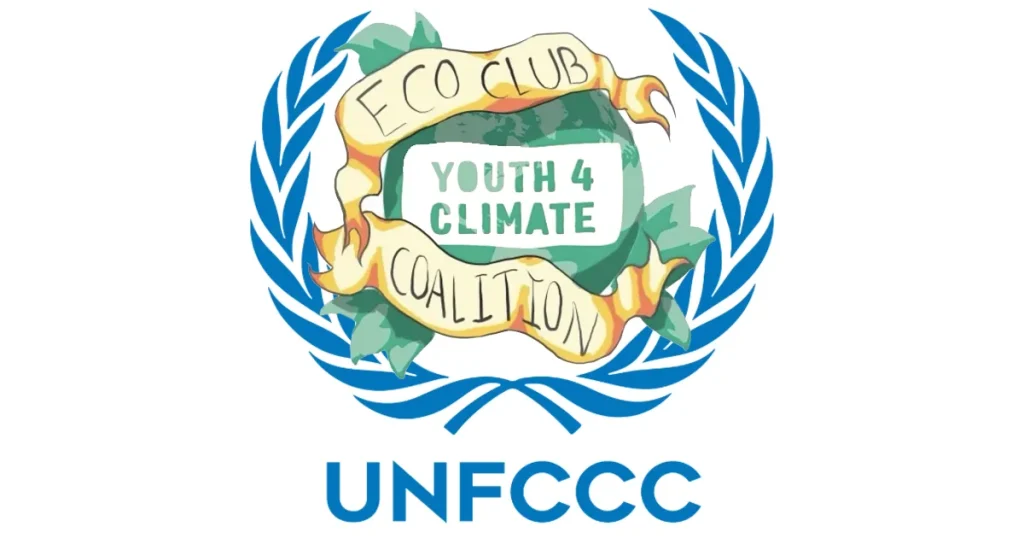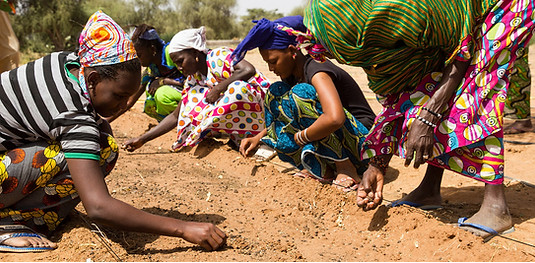Climate Change Adaptation: Enhancing Resilience in a Changing World
The technique of climate change adaptation has evolved as a crucial tactic to resist the growing effects of our changing environment in an era of mounting climate concerns. The deliberate act of adjusting to existing or predicted climatic shifts with the intention of avoiding negative effects is referred to as climate adaptation by the Intergovernmental Panel on Climate Change (IPCC). This adaptive effort encompasses a variety of human systems and aims to reduce negative effects and seize advantageous chances. Human intervention is crucial in assisting changes to anticipated climatic alterations and their effects in some natural systems.

Embracing Adaptation: Necessity Amidst Growing Challenges
As regions all over the world struggle with the real effects of climate change, a problem that only becomes worse over time, the urgency of adaptation becomes more and more clear. The adaptation strategy can take many different forms, from the adoption of strict to flexible adaption methods. The latter places a higher value on natural resources, community involvement, simplicity, and appropriateness whereas the former includes complex, expensive infrastructure solutions. Incorporating green spaces into urban environments to battle sweltering summer temperatures, modifying agricultural techniques to mitigate drought-related hazards, and many other context-specific measures are notable examples. Another is protecting homes and important infrastructure against flooding. WeADAPT is one of many platforms that act as collective repositories for various adaptation case studies.

Integration of Adaptation in UNFCCC Processes
Because it is linked to admitting that combating climate change has its limitations, adaptation has historically played a supporting role. However, this position has changed, largely as a result of developing countries’ activism. A pivotal moment was reached during COP 16 in Cancun (2011), when Parties realized how important it was to treat adaptation on an equal footing with mitigation efforts.
Through a multifaceted strategy, the United Nations Framework Convention on Climate Change (UNFCCC) supports member nations’ efforts in adaptation. It supports planning, implementation, and continuing monitoring and assessment for adaptation as well as risk assessment and vulnerability assessment. Important factors influencing adaption include:
The Adaptation Committee
The Adaptation Committee, a crucial part of the adaptation initiatives resulting from the Cancun Agreement, is crucial in orchestrating, facilitating, and promoting coordinated and harmonious adaptation strategies that cross political and geographic boundaries.
The Adaptation Committee acts as a hub where knowledge, approaches, and viewpoints converge to handle the difficulties presented by the altering climatic patterns in the constantly changing climate change scenario. Its main goal is to encourage international cooperation by establishing a shared awareness of the urgent need for inclusive, egalitarian, and globally relevant adaptive solutions.
The committee unites states and stakeholders, offering a forum for the sharing of best practices as well as amplifying the voices of those countries who are disproportionately impacted by climate change. It recognizes that political differences must be put aside in order for adaptation methods to be effective, and that it is everyone’s responsibility to deal with the growing effects of climate change.
The committee’s projects include a wide range, from studies and information dissemination to capacity building and policy development. In order to create context-specific adaptation strategies, nations need the information and instruments that knowledge sharing may provide. As a result, adaptation activities are smoothly incorporated into national agendas while also assisting nations in traversing the tricky terrain of policy implementation.
Additionally, the Adaptation Committee actively promotes the incorporation of adaptation measures into larger frameworks like the Paris Agreement and the United Nations Framework Convention on Climate Change (UNFCCC). This harmonization makes sure that diverse countries’ efforts are coordinated globally to support a cogent response to climate concerns.
In essence, the Adaptation Committee serves as a shining example of cooperation and creativity, pointing nations in the direction of a future in which adaptation techniques cross international borders, bringing the entire globe together in a concerted effort to foster resilience and protect our planet from the effects of climate change.
The Least Developed Countries Expert Group (LEG)
The Nairobi Work Programme develops as a vibrant and inclusive center that promotes knowledge exchange and the development of resilience in the face of climate change that is escalating at an ever-increasing rate. This initiative mobilizes group efforts to address the multiple issues posed by our changing environment by bringing together stakeholders from both the governmental and civil society realms.
It is critical to understand that, despite the fact that climate change poses more complex problems, its consequences are not felt uniformly around the world. Vulnerable nations—often those in the least developed regions—often bear the brunt of the problem’s repercussions despite making just a modest dent in its underlying causes. For these nations, the LEG offers technological know-how that acts as a compass in the challenging process of climate adaptation.
The LEG’s support is multifaceted, encompassing a spectrum of activities designed to empower nations to effectively tackle the challenges posed by a changing climate. It provides tailored guidance that considers the distinct ecological, economic, and social contexts of each nation. By recognizing the interplay between these factors, the LEG ensures that adaptation strategies not only address immediate vulnerabilities but also contribute to sustainable development in the long run.
One of the cornerstones of LEG’s efforts is capacity building. Through workshops, seminars, and knowledge-sharing platforms, the group enhances the capabilities of national stakeholders to design, implement, and monitor adaptation measures. This empowerment fosters a sense of ownership, allowing nations to take charge of their adaptation journey rather than passively relying on external assistance.
Furthermore, the LEG acts as a conduit for the voices of the vulnerable. It amplifies the concerns and aspirations of these nations on international platforms, ensuring that their perspectives are integrated into global climate discussions. This recognition is crucial, as it fosters a sense of inclusivity and solidarity, driving the world toward a more equitable climate future.
Vulnerable nations are urged to develop National Adaptation Plans (NAPs) that describe their own adaptation goals and strategies in consultation with LEG. Each country can negotiate the difficulties of climate change with resilience and foresight thanks to these strategies, which represent its circumstances.
The LEG is a tribute to the effectiveness of group effort as the whole community battles the tremendous issues of climate change. The organization helps countries overcome hardship and create a more secure and sustainable future by offering targeted technical support, encouraging capacity building, and championing the voices of the disadvantaged.
The Nairobi Work Programme
The Nairobi Work Programme develops as a vibrant and inclusive center that promotes knowledge exchange and the development of resilience in the face of climate change that is escalating at an ever-increasing rate. This initiative mobilizes group efforts to address the multiple issues posed by our changing environment by bringing together stakeholders from both the governmental and civil society realms.
The intricacies of climate change demand a collaborative approach that transcends geopolitical borders and sectoral limitations. The Nairobi Work Programme rises to this challenge by providing a neutral and inclusive platform where diverse voices converge. This convergence ignites a symphony of insights, perspectives, and experiences, enabling stakeholders to glean valuable lessons from one another’s successes and challenges.
Furthermore, the program’s emphasis on resilience-building emphasizes the necessity of not just responding to but also proactively preparing for the effects of climate change. Through the sharing of best practices, case studies, and creative solutions, participants are given the tools they need to build resilience in their own communities and respond swiftly and foresightedly to recent and impending climate changes.
The Nairobi Work Programme’s emphasis on collaboration transcends geographical boundaries. It emphasizes the interconnection of different sectors in the battle against climate change by linking the governmental and civil society spheres. This cooperation strengthens the alignment of goals, plans, and policies, enabling a more comprehensive and cogent response to the current problems.
Bridging Finance and Adaptation: UNFCCC’s Funds
In order to provide financial resources to help adaptation measures in developing nations, the United Nations Framework Convention on Climate Change (UNFCCC) is crucial. The Green Environment Facility (GEF), Adaptation Fund (AF), and Green Climate Fund (GCF) are three well-known programs that have been created to offer financial support for initiatives that boost resilience and counteract the effects of a changing climate..
However, despite these efforts, the current funding landscape falls short of the escalating adaptation requirements. As climate change intensifies and its consequences become more pronounced, the financial demands to effectively address these challenges continue to grow. The urgent need for action to mitigate climate change is coupled with the imperative to provide adequate funding for adaptation initiatives.
A Call to Action: Meeting the Funding Challenge
The present financing shortfall highlights the need for quick and determined action to increase financial resources for adaptation. Delaying preventative steps just makes the problems worse, increasing vulnerabilities and having an even greater negative impact on people, ecosystems, and economy. Given this fact, it is urgently necessary to give adaptation financing financial priority, since resilience-building and adaptation are two of the main pillars in the battle against climate change.
Our joint resolve to confront climate change in a comprehensive and inclusive manner will determine the destiny of our planet and its inhabitants. We can close the adaptation finance gap and pave the way for a more secure and resilient future for all by adopting novel financing models, fostering international cooperation, and stepping up advocacy activities.
Adapting Within the Paris Agreement
Long-term adaptation is listed as a major priority for all Parties under the Paris Agreement (PA), along with mitigation measures. The global adaptation aim is outlined in Article 7 of the PA and is to increase adaptive capacity, strengthen resilience, and decrease susceptibility to climate change, all of which contribute to sustainable development and a strong adaptation response. The agreement emphasizes how adaptation and mitigation are interdependent in order to keep the rise in global temperatures within certain limitations while protecting ecosystems and populations. The balance between climate financing allocations for both adaptation and mitigation is strengthened by Article 9.

Parties’ communication of their adaptation action plans, objectives, and support needs through instruments like Nationally Determined Contributions (NDCs) and National Adaptation Plans (NAPs) is an important aspect. This openness encourages teamwork in order to strengthen adaptive tactics and maintain drive.
The Environmental Impact: Key Data
| Environmental Factor | Global Average Change |
|---|---|
| Temperature | +1.2°C (since 1850) |
| Sea Level Rise | 20 cm (since 1901) |
| Carbon Dioxide (CO2) | 414 ppm (2021) |
| Ice Mass Loss | 300+ Gt/year (2010s) |
| Ocean Acidification | -0.1 pH (since 1750) |
Advancing Toward a More Resilient Future
In this era of climatic uncertainty, climate change adaptation is no longer a choice but a necessity. The evolving landscape necessitates dynamic, context-aware strategies that foster resilience and minimize vulnerabilities. As nations unite to navigate the challenges posed by climate change, the integration of adaptation measures within global frameworks like the UNFCCC and the Paris Agreement becomes increasingly pivotal.




